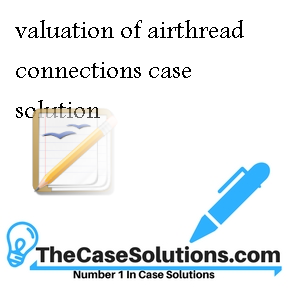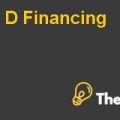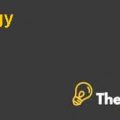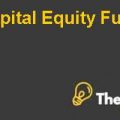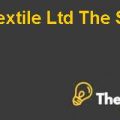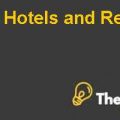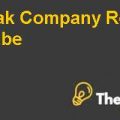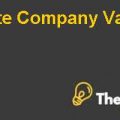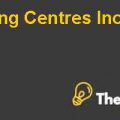Terminal Values
However, the valuation calculated above is based on the projected cash flows over the period of five years operations, but since AirThread is a going concern business which means that business operation of AirThread would continue even after the five years, probably till infinity. Meanwhile, the cash flow projection for the future results after five year operation would be more prone to wrong estimations of the revenues and expenses, in addition to this, the future is uncertain and it would be too difficult to calculate the future results of a business because the business is expected to continue for an unlimited future time.
Therefore, in order to account for the future cash flows of a going concern business after the projected results we need to calculate a value that would reflect the value of business operation till infinity and to do this a reasonable growth is used to for the estimation of cash flows till infinity, thus, the value of these cash flows till infinity is known as the terminal values.
Weighted Average Cost of Capital and Discounting of Terminal Values
However, the weighted average cost of capital represents the overall cost of financing the company’s operations and this value represents the returns required by the equity holders and the returns required by the debt holders. In case of AirThread, the cost of equity would be calculated using the average returns offered by the market for an equity share with similar characteristics to the equity share of AirThread, further, the risk free rate is also used in the calculation of equity cost. Meanwhile, the risk free rate is the rate offered by the treasury bonds issued by the government and since they are issued by government hence they are assumed to be risk free rates. Additionally, the industry specific risk is also incorporated into the calculation of cost of equity, however, since AirThread is a private company and its beta is not available, therefore, the comparable companies beta has been used for this purpose. Meanwhile, the comparable companies’ beta is geared with their respective gearing, therefore, in order to calculate the industry beta, comparable companies’ beta has been un-geared using comparable companies’ respective gearing and their average beta of 0.82 has been re-geared with the gearing of AirThread.
However, since the acquisition of AirThread would be financed through leverage buyout, and significant amount would become the part of its post-acquisition capital structure, meanwhile, the debt would be repaid monthly, therefore, the equity beta has been calculated by considering the capital structure of AirThread at different levels and for the purpose of calculation of a specific figure for the value of debt, average market value of debt from comparable companies has been used which is 28.1% of the total capital employed. Meanwhile, the cost of debt would be the cost equal the interest rate on the sum of amount used for acquisition of AirThread which is 5.50% and the tax rate of 40% is used for the calculation of after tax cost of debt. Furthermore, the weighted average cost of capital has been calculated using the cost of equity at the cost of debt equal to the average debt value of comparable companies’ which is 28.10%of total capitalization and then the cost of equity and cost of debt has been combined in by weighing their respective proportion in capital structure which gives the weighted average cost of capital of 7.96%.However, since we have conducted the valuation of AirThread using the adjusted present value technique which assumes that the company is hundred percent equity financed, therefore, the terminal values would also be discounted using the same un-geared cost of equity of 8.33%.Valuation Of Airthread Connections Case Solution
Growth Rate for Terminal Values
The growth rate for the calculation of AirThread’s terminal values has been calculated using the growth model which uses the return on capital employed and the retention rate at which AirThread retains its profits for future investments. Therefore, the net operating profits after tax for the year 2012 of $674.52/- has been divided by the total capital employed at the end of year 2012 of $4,061.45/-, which would include equity capital, long term debt and excludes the minority interest in AirThread. Meanwhile, the retention ratio has been calculated as the difference between operating profits after tax and unlevered cash flows calculated for the valuation of AirThread. Further the retained cash flows of $138.94/- has been divided by the total operating cash flows of $674.52/-, in order to get the retention ratio of 20.60%. Meanwhile, at the end the growth rate for terminal values has been reached as a product of the multiplication of retention ratio of 20.60% and return on capital employed of 16.61%, which would give them a growth rate for terminal values of 3.42% over the year 2012..............................
Valuation of AirThread Connections Case Solution Case Study Solution
This is just a sample partial case solution. Please place the order on the website to order your own originally done case solution.

